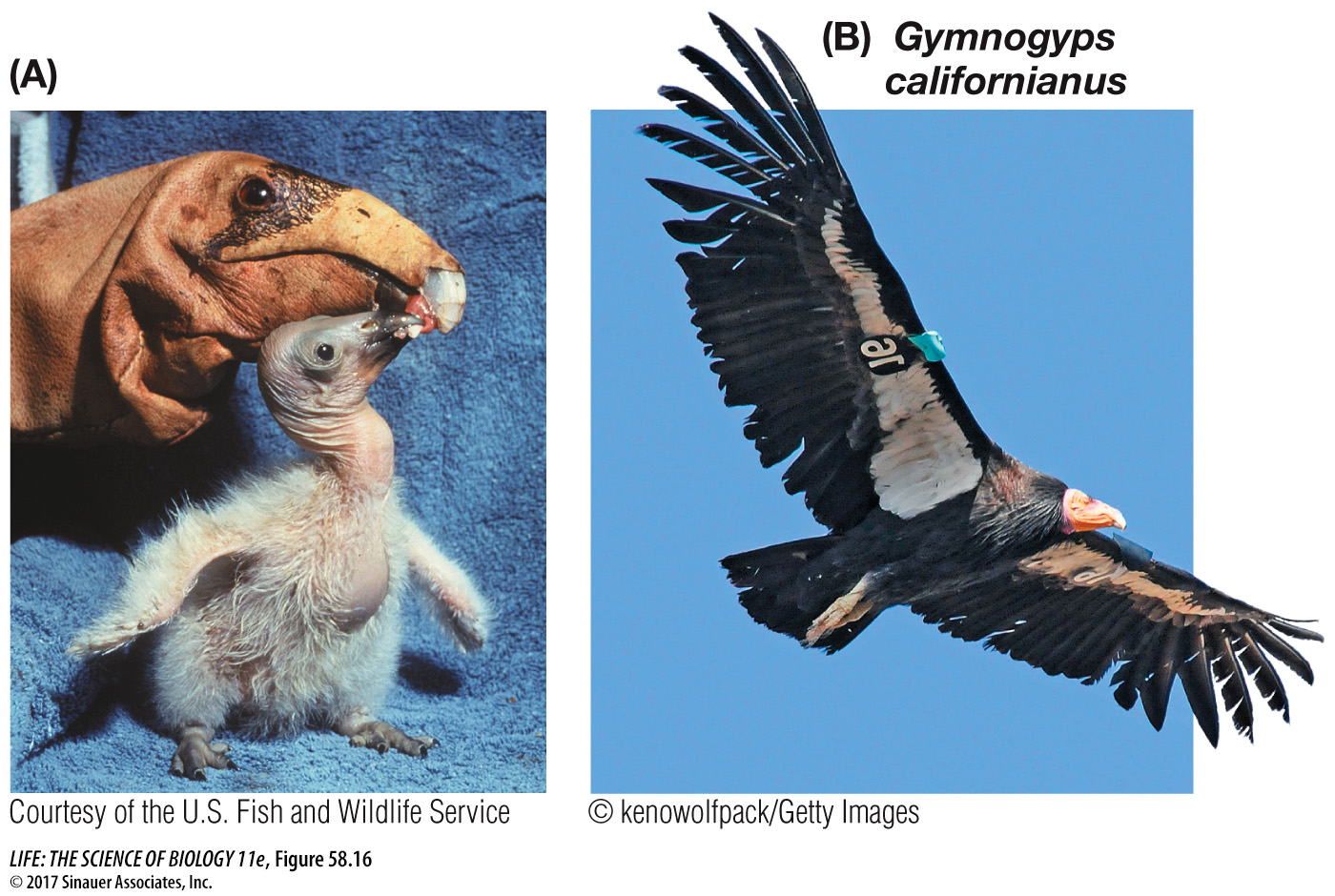Captive breeding programs can maintain a few species
A few of the world’s endangered species can be maintained in captivity while the external threats to their persistence are reduced or removed. However, captive propagation is only a temporary measure that buys time to deal with those threats. Zoos, aquariums, and botanical gardens do not have enough space to maintain adequate populations of more than a small fraction of Earth’s endangered and threatened species. Nonetheless, captive propagation can play an important role by maintaining species and their genetic diversity during critical periods, providing a source of individuals for reintroduction into the wild, and raising public awareness of threatened and endangered species.
The California condor, North America’s largest bird, survives today only because of captive propagation (Figure 58.16). Two centuries ago, condors ranged from British Columbia to northern Mexico, but by 1978 the wild population was plunging toward extinction. Many of the birds, which are scavengers, had died from ingesting animal carcasses containing lead shot or bullets. To save the condor from certain extinction, the Endangered Species Act was evoked and biologists captured all the remaining condors—only 22 individuals—and initiated a captive breeding program in 1983.

Figure 58.16 California Condors Make a Comeback (A) California condors raised in captivity are fed by humans wearing hand puppets so that the birds will not imprint on their human captors and will be able to survive in the wild. (B) Numbered wing tags allow conservation biologists to identify and track released adult condors. The survival of North America’s largest bird species depends on this captive propagation project.
The first captive-bred birds were released in the mountains north of Los Angeles in 1992. Since that time, there have also been releases in northern Arizona and Baja California. Today captive-bred birds use the same roosting sites, bathing pools, and mountain ridges that their wild-born predecessors did. In 2003 a wild-born chick fledged in the wild for the first time in more than two decades. By 2014 the number of condors living in the wild had reached 228, with another 193 living in captivity. Most of the major threats to condor survival, including power lines, pesticides, and museum collectors, have been mitigated. Lead poisoning is still a problem, but as of July 1, 2008, under the Ridley–Tree Condor Preservation Act, California hunters are required to use non-lead bullets when hunting in the condor’s range. Passage of this legislation marks a change in public attitudes from the days when cattle ranchers, in the mistaken belief that the condors killed livestock, opposed their reintroduction into the wild.
